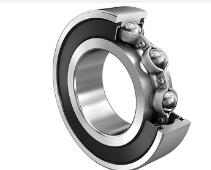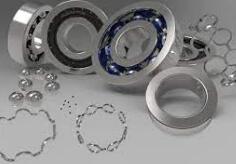The Inner Workings of Deep Groove Ball Bearings
Learn about the inner workings of deep groove ball bearings, including their structure, working principle, applications, maintenance, and troubleshooting.
Discover how these versatile components are used in automotive, industrial, and aerospace industries.
This article aims to shed light on the inner workings of deep groove ball bearings.
These components are critical in various industries, including automotive, industrial, and aerospace.
Did you know that deep groove ball bearings can handle both radial and axial loads?
Deep groove ball bearings are a type of rolling-element bearing that consists of an inner ring, outer ring, cage, and rolling elements.
They work on the principle of reducing friction and providing smooth rotation, allowing them to handle both radial and axial loads.
They are used in a wide range of applications, including automotive, industrial, and aerospace industries.
If you want to know more about the structure, working principle, applications, maintenance, and troubleshooting of deep groove ball bearings, keep reading this article.
What are deep groove ball bearings?

Deep groove ball bearings are a type of rolling-element bearing widely used in various applications, including automotive, aerospace, industrial machinery, and household appliances.
They are designed to handle both radial and axial loads and are capable of operating at high speeds.
A deep groove ball bearing consists of an inner ring, an outer ring, a cage, and a set of balls.
The inner and outer rings are usually made of steel, while the cage is typically made of brass, steel, or plastic.
The balls are made of steel or ceramic and are held in place by the cage.
The inner ring of the bearing is mounted on a shaft, and the outer ring is mounted in a housing.
When the bearing is in operation, the balls roll between the inner and outer rings, reducing friction and enabling smooth rotation.
Deep groove ball bearings have a deep groove, or channel, that runs along the inner and outer rings.
This design allows the bearings to handle both radial and axial loads, as well as angular misalignment.
The deep groove also provides a larger contact area between the balls and the raceways, resulting in higher load capacity and lower noise levels.
One of the key advantages of deep groove ball bearings is their ability to operate at high speeds.
This is due to their low friction and minimal heat generation, which reduces wear and extends the bearing's service life.
Additionally, deep groove ball bearings are relatively easy to install and maintain, making them a popular choice among manufacturers and end-users.
There are many variations of deep groove ball bearings available, including single-row and double-row designs, as well as sealed and shielded versions.
Sealed bearings are enclosed with rubber or metal seals to prevent contaminants from entering the bearing,
while shielded bearings have a metal shield that prevents debris from entering but allows for some ventilation.
In summary, deep groove ball bearings are a versatile and widely used type of rolling-element bearing that can handle both radial and axial loads, operate at high speeds, and are relatively easy to install and maintain.
Their simple design and high load capacity make them an excellent choice for a variety of applications.
Structure of Deep Groove Ball Bearings
1.Outer ring: The outer ring is a circular ring-shaped component that surrounds the inner ring and is typically made of hardened steel.
It provides a surface for the rolling elements to rotate against and also serves as a housing for the bearing.
2.Inner ring: The inner ring is a circular ring-shaped component that fits onto the shaft and rotates with it.
Like the outer ring, it is typically made of hardened steel and provides a surface for the rolling elements to rotate against.
3.Cage: The cage is a component that separates and retains the rolling elements in position within the bearing.
It is typically made of brass, steel, or plastic and is designed to prevent the rolling elements from colliding with each other.
4.Rolling elements: The rolling elements are the small, cylindrical, or spherical balls that roll between the inner and outer rings.
They are typically made of steel or ceramic and are held in place by the cage.
The rolling elements reduce friction and enable smooth rotation of the bearing.
The number and size of the rolling elements can vary depending on the size and load capacity of the bearing.
Working Principle of Deep Groove Ball Bearings
The working principle of deep groove ball bearings is based on the rolling contact between the inner and outer rings and the rolling elements (balls).
The bearings are designed to handle both radial and axial loads and operate with minimal friction and wear.
1.Radial load: When a radial load is applied to the bearing, the rolling elements roll along the groove in the inner and outer rings.
This rolling contact reduces friction between the rings and the rolling elements and allows the bearing to rotate smoothly.
2.Axial load: Deep groove ball bearings are also capable of handling axial loads, which are forces that act parallel to the axis of the bearing.
When an axial load is applied, the rolling elements are forced to slide along the raceways of the rings.
The angle of contact between the rolling elements and the raceways increases, resulting in increased friction and reduced bearing life.
3.Friction and lubrication: The rolling contact between the rings and the rolling elements generates friction, which can cause wear and damage to the bearing components.
To reduce friction and extend bearing life, deep groove ball bearings require proper lubrication.
Lubricants such as grease or oil are used to reduce friction and prevent wear between the rings and the rolling elements.
The lubricant also helps to dissipate heat and prevent the buildup of contaminants within the bearing.
Deep groove ball bearings operate by rolling contact between the inner and outer rings and the rolling elements, allowing for smooth rotation and efficient transfer of radial and axial loads.
Proper lubrication is crucial to reduce friction and prevent wear and damage to the bearing components.
Factors Affecting the Performance of Deep Groove Ball Bearings

The performance of deep groove ball bearings can be affected by various factors that can impact their lifespan and efficiency.
Some of the key factors that affect the performance of deep groove ball bearings are:
1.Operating temperature: The operating temperature of the bearing can have a significant impact on its performance.
High temperatures can cause the lubricant to degrade, leading to increased friction and wear.
Additionally, high temperatures can cause thermal expansion, which can affect the bearing clearance and cause misalignment.
2.Speed and acceleration: The speed and acceleration of the bearing can affect its performance, particularly in terms of its ability to handle axial loads.
High speeds and accelerations can cause the rolling elements to slide along the raceways, increasing friction and reducing the bearing's lifespan.
3.Load type and magnitude: The type and magnitude of the load applied to the bearing can also affect its performance.
Radial loads are typically easier for deep groove ball bearings to handle, while axial loads can cause increased friction and wear.
High loads can also cause deformation of the bearing components, leading to misalignment and reduced lifespan.
4.Material and design considerations: The choice of materials and design of the bearing can also affect its performance.
The material used for the bearing components can affect its strength, hardness, and resistance to wear and corrosion.
Additionally, the design of the bearing, including the number and size of the rolling elements and the cage design, can impact its load capacity, speed, and efficiency.
Applications of Deep Groove Ball Bearings
1.Automotive industry: Deep groove ball bearings are widely used in the automotive industry for various applications,
including wheel bearings, transmission bearings, and engine bearings. They provide smooth rotation and high load capacity,
making them ideal for handling the heavy loads and high speeds encountered in automotive applications.
2.Industrial equipment and machinery: Deep groove ball bearings are also used extensively in industrial equipment and machinery,
such as pumps, motors, conveyor systems, and gearboxes. They provide reliable performance and low friction,
making them suitable for a range of applications in manufacturing, mining, and construction.
3.Aerospace and the aviation industry: The aerospace and aviation industry also utilizes deep groove ball bearings for various applications,
including aircraft engines, landing gear, and flight control systems.
They provide high load capacity and low friction, which is essential for the safe and efficient operation of aircraft.
In addition to these industries, deep groove ball bearings are also used in other applications, such as medical equipment,
household appliances, and consumer electronics.
Their versatility, reliability, and low maintenance requirements make them a popular choice for a wide range of applications.
Maintenance and Troubleshooting of Deep Groove Ball Bearings
Maintenance and troubleshooting are essential to ensure the proper functioning of deep groove ball bearings and extend their lifespan.
Some of the key maintenance and troubleshooting practices for deep groove ball bearings include:
1.Inspection and cleaning: Regular inspection and cleaning of the bearing are crucial to identify any signs of wear, damage, or contamination.
The bearing should be cleaned with a suitable solvent and inspected for any signs of pitting, cracks, or corrosion.
Any damaged or worn components should be replaced promptly.
2.Lubrication: Proper lubrication is essential to reduce friction and prevent wear and damage to the bearing components.
The bearing should be lubricated with the manufacturer-recommended lubricant at regular intervals.
The lubrication frequency and amount may vary based on the application and operating conditions.
3.Bearing failure and diagnosis: If the bearing fails or experiences performance issues, it is essential to diagnose the problem promptly to prevent further damage or failure.
Common signs of bearing failure include abnormal noise, vibration, or heat.
Diagnosing the cause of the failure requires a thorough inspection of the bearing and its surrounding components.
Some common causes of bearing failure include inadequate lubrication, contamination, misalignment, or overload.
Conclusion
By reading this article, you will gain a deeper understanding of the inner workings of deep groove ball bearings,
including how they are structured, how they work, and how they are used in various industries.
You will also learn about the importance of maintenance and troubleshooting in ensuring their proper functioning and extended lifespan.





